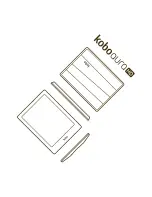
Qscan User’s Guide Version 1.4
Page
PROGRAMMING
X015 1 0000 0001 03 0004
X016 05 0000 00 08 16 00
X017 0 0 0 012 012 1 2 0 0
An example of the same format, this time restricting this format for use only with 10
character barcodes:
X015 1 0010 0001 03 0004
X016 05 0000 00 08 16 00
X017 0 0 0 012 012 1 2 0 0
An example of the same format, this time selecting 0 site code digits, which has the
effect of forcing the site code to 0 (because the format still has 8 bits specified for
the site code), and taking the first 5 digits of the barcode:
X015 1 0000 0000 00 0000
X016 05 0000 00 08 16 00
X017 0 0 0 012 012 1 2 0 0
An example of a 50 bit format, using 32 bits for the id, 8 for the site, 8 for the issue
code, and 2 parity bits. The site code will be taken from the first 3 digits of the
barcode. The next 5 digits will be used for the id, and the next digit for the issue
code. The first bit of the output will be a left parity bit calculated from the following
24 bits. The last bit (bit 50) will be a parity bit calculated from the preceding 24 bits:
X015 1 0000 0001 03 0004
X016 05 0009 01 08 16 18
X017 0 0 0 024 024 1 2 3 0
Command Notes:
If site code start (“
ssss
”) is 0000, then no site code is extracted from the barcode
data. You may still include bits in the output format for the site code, except the
site code data will not come from the barcode. It will default to 0, unless you have
programmed a site override.
If site code digits (“
sd
”) is set to 00, then all remaining digits in the barcode are
used for the site code.
If id start (“
bbbb
”) is 0000, then no id is extracted from the barcode data. You may
BARCODE -> WIEGAND OUT
















































